The Color Wheel: An Essential Guide for Painters
Welcome to the vibrant world of painting! If you've ever picked up a brush and felt overwhelmed by the multitude of colors available, you're not alone. The color wheel is your best friend in navigating this colorful landscape. It’s not just a tool; it’s a roadmap that guides you through the intricate relationships between colors. Understanding the color wheel is essential for any painter, whether you're a seasoned artist or just starting out. This guide will help you unlock the secrets of color theory and show you how to use the color wheel to enhance your artwork.
At its core, the color wheel is a circular diagram that illustrates the relationships between different colors. It consists of three main categories: primary colors, secondary colors, and tertiary colors. Primary colors, which are red, blue, and yellow, cannot be created by mixing other colors. They serve as the foundation for creating all other colors. When you mix two primary colors, you get secondary colors—green, orange, and purple. But wait, there’s more! By mixing a primary color with a secondary color, you create tertiary colors, such as red-orange or blue-green. This intricate dance of colors is what makes the color wheel such a powerful tool for artists.
Now that we've covered the basics, let’s dive into the concept of color harmony. Color harmony is all about creating a pleasing arrangement of colors in your artwork. When colors work well together, they can evoke emotions and set the tone of your piece. There are several popular color schemes that you can use to achieve harmony:
- Complementary Colors: Colors that are opposite each other on the wheel.
- Analogous Colors: Colors that are next to each other on the wheel.
- Triadic Colors: A scheme that uses three colors evenly spaced on the wheel.
Each of these schemes has its own unique appeal and can be applied in various ways to create stunning artwork. By understanding how to use these color schemes, you can elevate your paintings from ordinary to extraordinary!
Complementary colors are like the dynamic duo of the color wheel. They are directly opposite each other, such as blue and orange or red and green. When used together, these colors create a striking contrast that can make your artwork pop. Imagine a sunset where the vibrant oranges and deep blues dance together—this is the magic of complementary colors!
To harness the power of complementary colors, think about balance. You don’t want one color to overpower the other. Instead, aim for a harmonious blend that draws the viewer's eye across the canvas. Consider using one color as the dominant shade and the other as an accent. This technique can add depth and interest to your paintings, creating a visual journey for your audience.
While complementary colors can be stunning, they can also lead to muddy compositions if not used wisely. One common pitfall is using equal amounts of each color, which can create a chaotic look. Instead, try to focus on the emotional impact you want to achieve. Remember, less can often be more when it comes to color application!
On the other side of the spectrum, we have analogous colors, which are located next to each other on the color wheel. Think of a serene landscape where the greens, yellows, and blues blend seamlessly. This color scheme creates a sense of unity and harmony, making it perfect for conveying tranquility in your artwork.
Mixing colors is an essential skill for any painter. The ability to create the perfect hue can make or break your artwork. Here are some practical tips to help you achieve your desired shades:
- Start with small amounts of paint to avoid waste.
- Mix colors gradually, adding a little at a time.
- Keep a color journal to document your mixtures and outcomes.
By mastering color mixing, you'll gain more control over your palette, allowing you to bring your artistic visions to life.
Understanding the difference between primary and secondary colors is crucial. When you mix primary colors, you’re laying the groundwork for all other hues. This foundational knowledge will help you create a rich and diverse color palette.
Even the best artists face challenges when mixing colors. If you find your colors looking dull or muddy, try adding a touch of white to lighten them or a hint of complementary color to neutralize them. Remember, practice makes perfect, so don’t be afraid to experiment!
Q: What is the best way to start using the color wheel?
A: Begin by familiarizing yourself with the primary, secondary, and tertiary colors. Practice creating different color schemes and see how they affect your artwork.
Q: Can I use more than one color scheme in a single painting?
A: Absolutely! Many artists blend different color schemes to create unique effects. Just ensure that they complement each other well.
Q: How do I know which colors to mix?
A: Use the color wheel as a guide. Look for colors that are next to each other for harmony or those that are opposite for contrast.

The Basics of the Color Wheel
Understanding the fundamental structure of the color wheel is crucial for painters. The color wheel is more than just a circular diagram; it's an essential tool that helps artists navigate the vibrant world of color. At its core, the color wheel is divided into three main categories: primary colors, secondary colors, and tertiary colors.
Let's break these down:
- Primary Colors: These are the building blocks of all other colors. In traditional color theory, the primary colors are red, blue, and yellow. These colors cannot be created by mixing other colors together.
- Secondary Colors: When you mix two primary colors together, you create secondary colors. The secondary colors are green (blue + yellow), orange (red + yellow), and purple (red + blue).
- Tertiary Colors: These colors are formed by mixing a primary color with a secondary color. Some examples include red-orange, yellow-green, and blue-purple.
These relationships create a dynamic interplay of colors that can evoke emotions and set the tone for any artwork. Understanding how these colors relate to one another is essential for any painter looking to create depth and interest in their work.
Moreover, the arrangement of these colors on the wheel is intentional. Primary colors sit at equal distances from each other, forming a triangle, while secondary colors fill in the gaps. Tertiary colors, on the other hand, are positioned between primary and secondary colors, creating a seamless flow of hues that artists can utilize.
But why does this matter? Well, grasping the basics of the color wheel allows artists to make informed decisions about their color choices, leading to more cohesive and impactful artwork. Imagine trying to cook a gourmet meal without knowing the ingredients—it's much the same with painting without a solid understanding of color theory!
In summary, the color wheel is not just a tool; it’s a painter’s roadmap. By mastering the basics of primary, secondary, and tertiary colors, artists can unlock a world of creative possibilities, ensuring their artwork resonates with viewers on a deeper level.
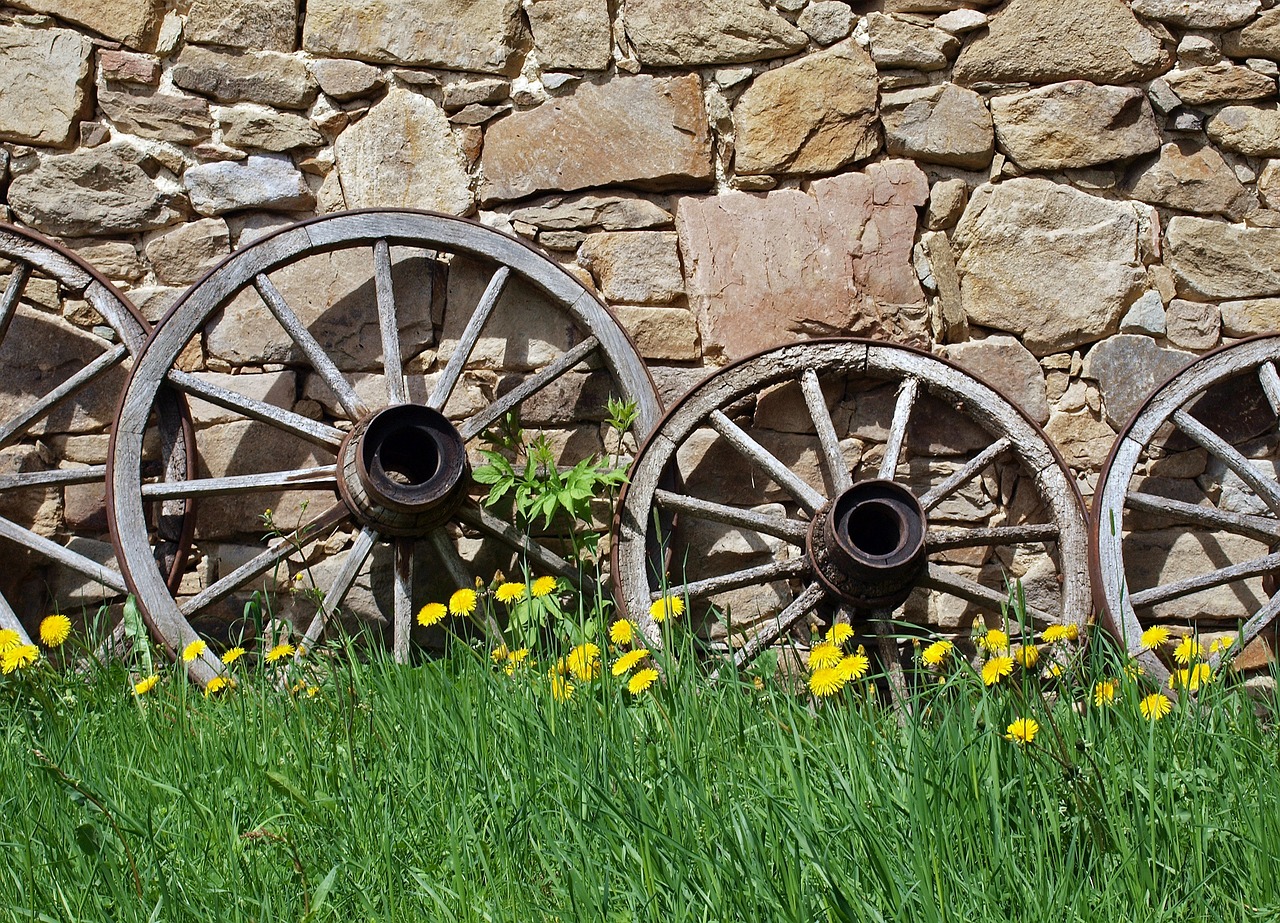
When it comes to painting, understanding color harmony is like having a secret weapon in your artistic arsenal. It’s the magic that transforms a simple canvas into a captivating masterpiece. Color harmony refers to the pleasing arrangement of colors, which can evoke certain feelings and create a sense of balance in your artwork. Think of it as the recipe that makes your painting not just good, but extraordinary!
There are various color schemes that artists can utilize to achieve harmony. Each scheme has its unique characteristics and emotional impact. For instance, a complementary color scheme uses colors that are opposite each other on the color wheel. This creates a striking contrast that can make your artwork pop! On the other hand, an analogous color scheme involves colors that sit next to each other, resulting in a more subtle and harmonious look. It’s like a gentle breeze compared to a thunderous storm—both are beautiful, but they evoke different feelings!
Let’s break down some of the most popular color schemes that can elevate your art:
- Complementary Colors: These are colors that sit opposite each other on the color wheel. They create a vibrant look when paired together, making each color stand out.
- Analogous Colors: These colors are next to each other on the wheel and typically match well. They create serene and comfortable designs.
- Triadic Colors: This scheme involves three colors that are evenly spaced around the color wheel. It’s a great way to achieve a vibrant yet balanced composition.
Using these color schemes effectively can significantly enhance your artwork. For instance, if you’re painting a sunset, you might want to use an analogous color scheme with warm hues like reds, oranges, and yellows to create a cozy, inviting atmosphere. Alternatively, if you want to create a more dynamic scene, you might opt for complementary colors, like blue and orange, to add excitement and energy.
However, it’s essential to remember that while color schemes serve as guidelines, your creativity should always take the lead. Experimenting with different combinations can lead to unexpected and delightful results. Just like cooking, sometimes a pinch of this and a dash of that can create a flavor explosion that no recipe could predict!
In conclusion, mastering color harmony and understanding various color schemes are fundamental skills for any painter. They not only help you create visually appealing artwork but also allow you to express emotions and tell stories through your use of color. So, grab your brushes and start experimenting! Who knows? You might just stumble upon your next favorite color combination.
Q: What is the best color scheme for beginners?
A: Beginners often find it easier to start with analogous color schemes, as they create a harmonious look without overwhelming contrasts.
Q: Can I mix different color schemes in one painting?
A: Absolutely! Mixing color schemes can add depth and interest to your artwork. Just be mindful of balance to avoid overwhelming the viewer.
Q: How do I choose a color scheme for my painting?
A: Consider the mood you want to convey. Warm colors create excitement, while cool colors evoke calmness. Experiment and see what resonates with you!

Complementary colors are like the dynamic duo of the color wheel, always ready to create a visual impact that can leave viewers in awe. These colors sit directly opposite each other on the wheel, creating a striking contrast that can energize any piece of art. Think of them as the yin and yang of color theory; when paired together, they not only enhance each other's vibrancy but also bring a sense of balance to your artwork. For instance, if you take a bright orange and place it next to a deep blue, the result is a stunning visual effect that draws the eye and keeps it engaged.
But why are complementary colors so crucial for artists? Well, they help to create a sense of depth and dimension in your paintings. When used effectively, complementary colors can make certain elements pop, guiding the viewer's attention to focal points within your work. Imagine a beautiful landscape painting where the vibrant green of the grass is contrasted against a rich red barn; this not only creates a pleasing aesthetic but also adds a layer of interest that can tell a story.
One of the most exciting aspects of using complementary colors is the emotional response they can evoke. Different color combinations can convey various feelings and moods. For example, a pairing of purple and yellow can create a sense of cheerfulness and energy, while red and green might evoke a more festive or holiday-like atmosphere. It's fascinating how simple color choices can have such profound effects on the viewer's perception.
To illustrate this concept further, let’s take a look at a table showcasing some common complementary color pairs:
| Color Pair | Visual Effect |
|---|---|
| Red & Green | Festive and vibrant |
| Blue & Orange | Energetic and bold |
| Yellow & Purple | Cheerful and lively |
| Pink & Green | Fresh and playful |
While complementary colors can certainly elevate your artwork, they require a delicate balance. Overusing them can lead to a chaotic composition that feels overwhelming rather than harmonious. A common mistake is to apply these colors in equal amounts; instead, consider using one as the dominant color and the other as an accent. This approach allows you to maintain visual interest without sacrificing the overall cohesion of your piece.
In conclusion, understanding and utilizing complementary colors can transform your paintings from ordinary to extraordinary. They are powerful tools in your artistic arsenal, capable of creating contrast, depth, and emotional resonance. So, the next time you're mixing paints or choosing colors for your next masterpiece, remember the magic that complementary colors can bring to your canvas!
- What are complementary colors? Complementary colors are pairs of colors that are located directly opposite each other on the color wheel, creating a high contrast and vibrant look when used together.
- How do I use complementary colors in my artwork? You can use complementary colors to create focal points, enhance vibrancy, and add depth to your paintings. It's best to use one color as a dominant shade and the other as an accent.
- Can using complementary colors make my artwork look too busy? Yes, if overused, complementary colors can create a chaotic appearance. It's essential to balance them carefully to maintain harmony in your composition.
- What are some examples of complementary color pairs? Common pairs include red and green, blue and orange, and yellow and purple.
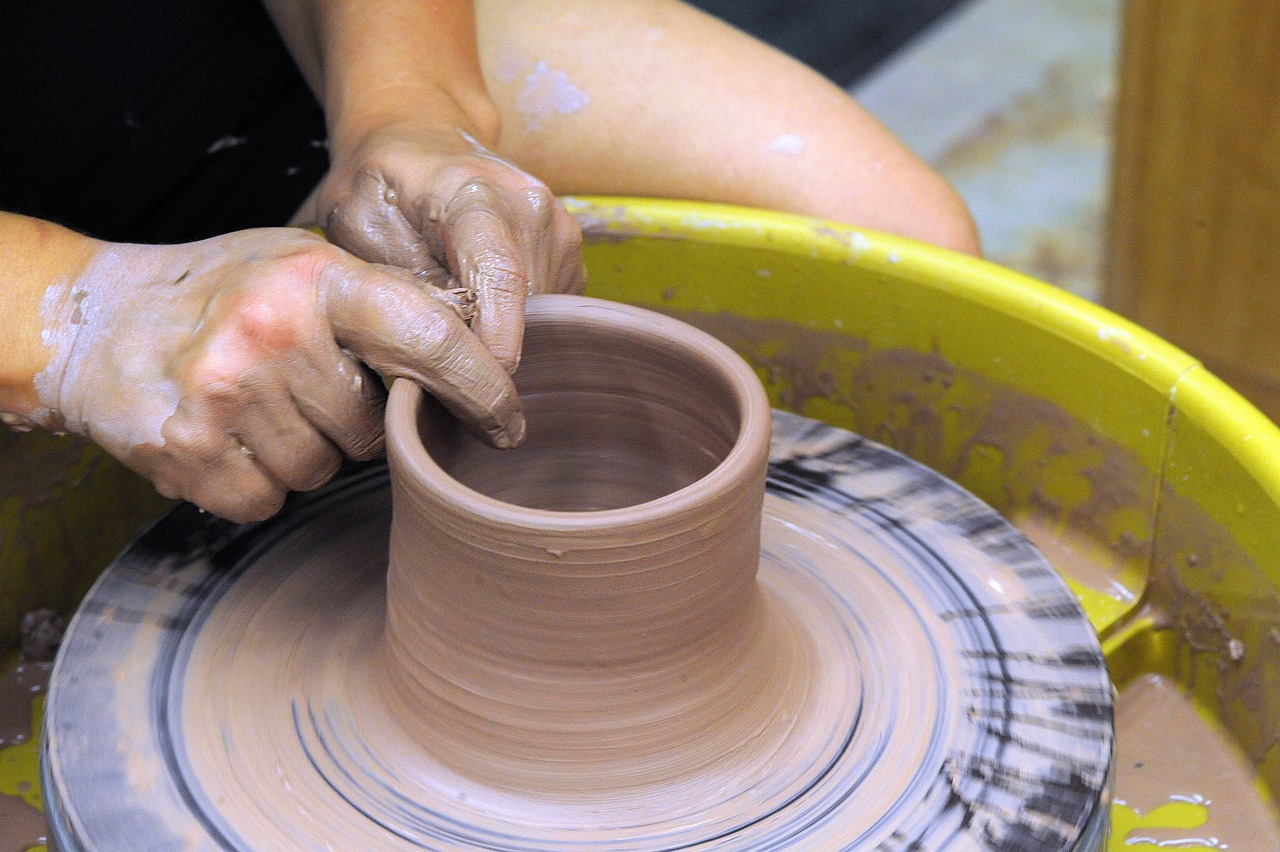
When it comes to painting, using complementary colors can be a game changer. These colors, positioned directly opposite each other on the color wheel, create a striking contrast that can make your artwork pop. Imagine a vibrant orange set against a deep blue; the interaction between these colors can evoke emotions and draw the viewer's eye, making your piece not just seen but felt. However, using complementary colors effectively is an art in itself, requiring a balance that can elevate your work from ordinary to extraordinary.
To harness the power of complementary colors, start by selecting your dominant hue. For instance, if you choose a bright yellow, consider its complementary color, purple. This combination can create a dynamic tension in your artwork. But how do you achieve that perfect balance? One effective method is to use the 60-30-10 rule. This guideline suggests that 60% of your painting should be the dominant color, 30% the secondary color, and 10% an accent color. By adhering to this ratio, you can maintain harmony while still allowing the complementary colors to shine.
Another technique is to incorporate varying shades and tints of your complementary colors. Instead of using pure hues, consider mixing in some white or black to soften or deepen the colors. This approach not only adds depth but also prevents your painting from becoming too jarring. For example, instead of using pure red and green, try a muted olive green paired with a rich burgundy. This subtlety can create a more sophisticated look while still benefiting from the vibrancy of complementary colors.
However, it's important to be aware of common pitfalls when working with complementary colors. One of the most frequent mistakes is using them in equal amounts, which can lead to a chaotic and unbalanced composition. Instead, focus on creating a focal point with your dominant color while allowing the complementary color to support it. This strategy ensures that the viewer's attention is directed where you want it, maintaining the visual interest without overwhelming the senses.
Lastly, remember that the context of your painting matters. The mood you want to convey can influence how you use complementary colors. For instance, bright, saturated colors can evoke joy and excitement, while muted tones may create a more somber or reflective atmosphere. Consider the emotional impact of the colors you choose and how they interact with one another. By doing so, you can create a cohesive piece that resonates with your audience.
In summary, using complementary colors effectively is about balance, variation, and intention. By starting with a dominant color, adhering to the 60-30-10 rule, and being mindful of the emotional context, you can transform your paintings into captivating works of art that command attention and provoke thought.
- What are complementary colors? Complementary colors are pairs of colors that, when combined, cancel each other out, producing a grayscale color like white or black. They are located directly opposite each other on the color wheel.
- How can I find complementary colors for my artwork? You can use a color wheel to identify complementary colors. Simply locate your chosen color and find the color directly opposite it.
- Can I mix complementary colors? Yes! Mixing complementary colors can create a range of neutral tones. However, be cautious, as mixing them in equal parts can lead to muddy colors.
- What is the 60-30-10 rule? This rule is a guideline for color distribution in artwork, suggesting that 60% should be the dominant color, 30% the secondary color, and 10% an accent color.
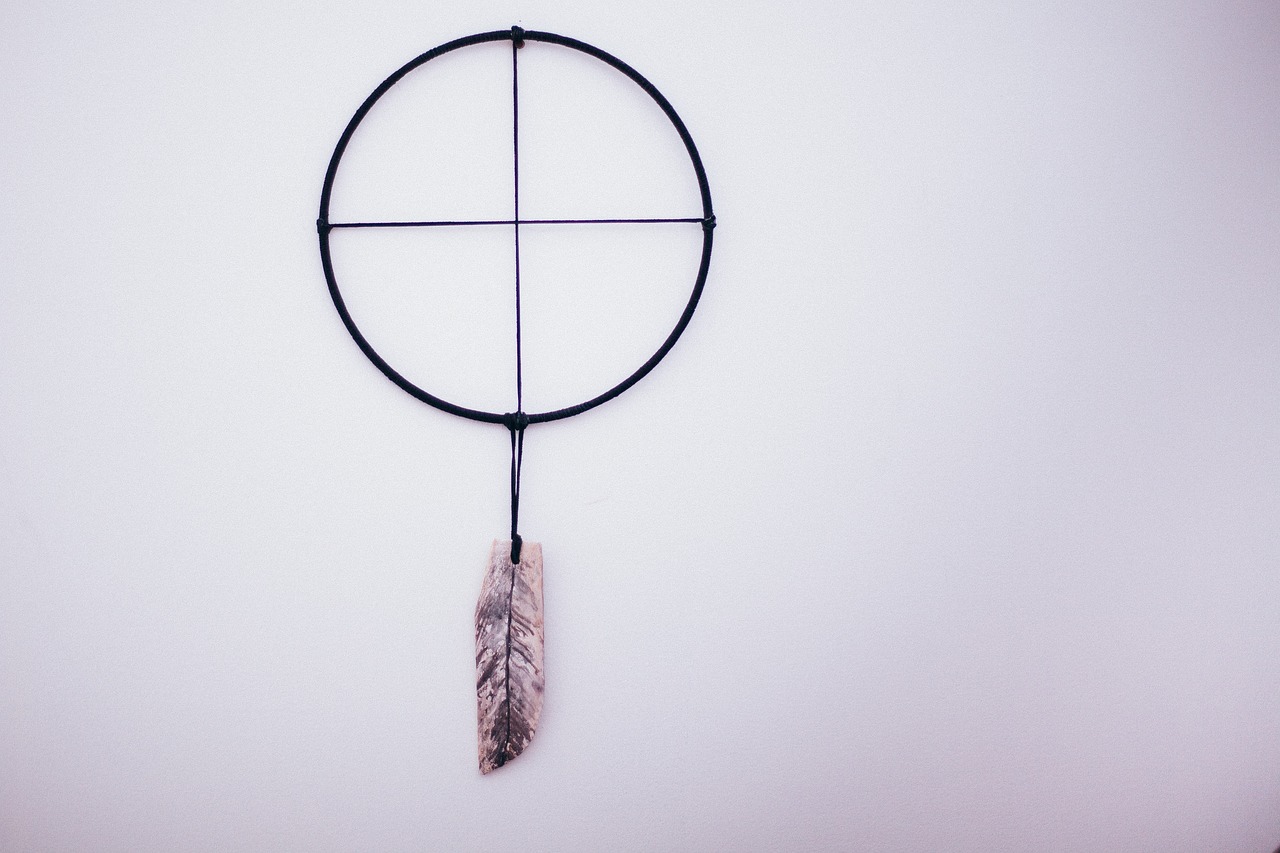
When it comes to using complementary colors in your artwork, it's easy to get carried away with the vibrant contrasts they can create. However, there are several common pitfalls that can lead to muddy or unbalanced compositions. One of the most frequent mistakes is overusing complementary colors without considering their balance. Imagine a seesaw; if one side is too heavy, it tips over. In art, this imbalance can make your painting feel chaotic rather than harmonious.
Another common error is neglecting the value and saturation of the colors. Just because two colors are complementary doesn’t mean they will work well together in every context. For instance, a bright red paired with a vivid green can create a striking effect, but if you use them at full saturation, the result may be overwhelming. Instead, try muting one of the colors or adjusting their values. A softer red with a deep green can create a more sophisticated and pleasing visual experience.
Additionally, many artists forget to consider the background when using complementary colors. A common mistake is placing complementary colors directly next to each other without any transitional hues or neutral tones in between. This can create a jarring effect that detracts from the overall composition. To avoid this, consider using a neutral background or incorporating a gradient of colors to soften the transition.
Lastly, be cautious of relying solely on complementary colors to create contrast. While they can certainly add vibrancy, over-reliance can lead to a lack of depth in your artwork. Instead, think about incorporating various shades and tints of your complementary colors. This approach not only adds interest but also allows for a more nuanced exploration of color relationships. Remember, art is about balance and harmony, so don’t be afraid to experiment!
In summary, here are some key mistakes to avoid:
- Overusing complementary colors without balance
- Neglecting value and saturation
- Ignoring the background and transitions
- Relying solely on complementary colors for contrast
By being mindful of these common pitfalls, you can harness the power of complementary colors to create stunning and impactful artwork that resonates with viewers.
Q: What are complementary colors?
A: Complementary colors are pairs of colors that are located directly opposite each other on the color wheel. When used together, they create a striking contrast.
Q: How can I use complementary colors in my paintings?
A: You can use complementary colors to create contrast and vibrancy. Just be sure to balance their usage to avoid overwhelming your composition.
Q: What are some common mistakes when using complementary colors?
A: Common mistakes include overusing them without balance, neglecting value and saturation, ignoring background transitions, and relying solely on them for contrast.
Q: Can I mix complementary colors?
A: Yes, mixing complementary colors can create neutral tones or interesting shades. Just be cautious, as mixing them too much can result in muddy colors.

When you think about creating a soothing and harmonious painting, analogous colors can be your best friends. These are the colors that sit right next to each other on the color wheel, forming a beautiful gradient that captures the eye. Imagine standing on a serene beach at sunset, where the hues of orange, pink, and purple blend seamlessly into each other. That’s the magic of analogous colors! They create a sense of unity and cohesion in your artwork, making it visually appealing without overwhelming the viewer.
Using analogous colors can evoke specific emotions and feelings in your audience. For example, if you choose colors like blue, blue-green, and green, you can create a calming atmosphere reminiscent of a tranquil forest. On the other hand, selecting colors like red, red-orange, and orange can generate warmth and excitement, similar to a vibrant autumn day. The key here is to pick a dominant color and use the neighboring colors to enhance its vibrancy and depth.
To effectively incorporate analogous colors into your paintings, consider the following tips:
- Choose a Dominant Color: Start with one color as the focal point of your artwork.
- Mix and Match: Experiment with different combinations of adjacent colors to find what resonates with your vision.
- Balance is Key: Ensure that your dominant color is more prominent, while the others support it without stealing the spotlight.
Analogous colors can also be used to create depth and dimension in your paintings. By layering these colors, you can achieve a sense of perspective that draws the viewer into the scene. For instance, if you're painting a landscape, you might use various shades of green for the foreground trees, transitioning to yellows and blues for the sky. This not only enhances the overall composition but also guides the viewer's eye throughout the artwork.
However, it's essential to be mindful of how you use these colors. While they can create beautiful harmony, overusing them without any contrast can lead to a flat and uninteresting painting. To avoid this, consider introducing a complementary color as an accent to break the monotony and add visual interest. Just like adding a pinch of salt to a dish can elevate its flavor, a splash of contrasting color can make your painting pop!
In summary, mastering the use of analogous colors can significantly enhance your painting skills. They offer a pathway to create unified and emotionally resonant artworks that capture the essence of your subject matter. So, the next time you sit down to paint, think about the colors that are neighbors on the wheel, and let them guide your creativity!
What are analogous colors?
Analogous colors are groups of three colors that are next to each other on the color wheel. They usually consist of one dominant color and two supporting colors.
How do I choose analogous colors for my painting?
Start by selecting a dominant color that you want to feature in your artwork. Then, look at the colors adjacent to it on the color wheel and choose one or two to complement it.
Can I use analogous colors in any type of painting?
Absolutely! Analogous colors can be used in any painting style, whether it's realism, abstract, or impressionism. They help create a cohesive look that can enhance the overall impact of your work.
What if I want more contrast in my painting?
You can introduce a complementary color to your palette. This will provide contrast and help certain elements of your painting stand out, making your artwork more dynamic.
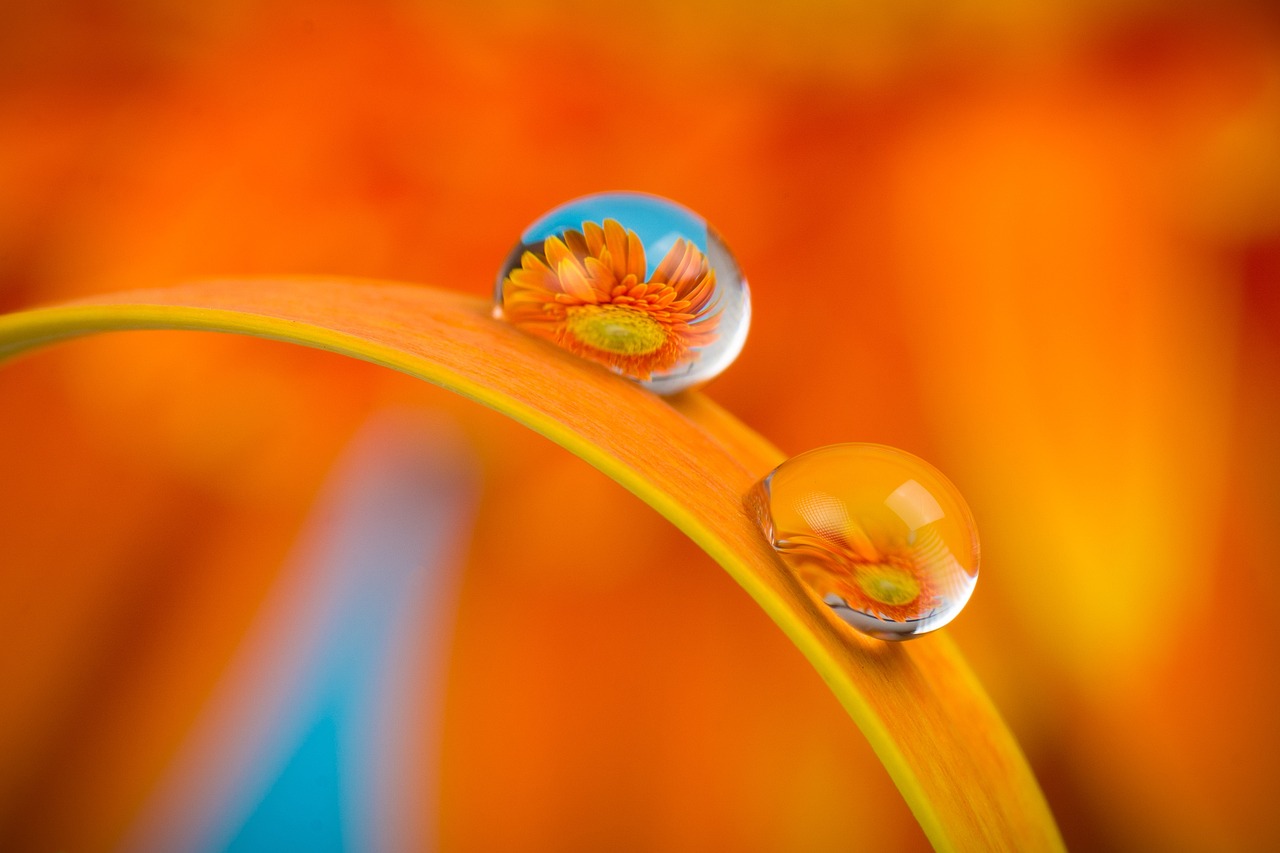
Mixing colors is one of the most thrilling aspects of painting, and mastering it can truly elevate your artwork to new heights. Whether you're a seasoned artist or just starting out, understanding how to mix colors effectively is essential. Think of color mixing as a dance; each hue has its own rhythm, and when you find the right steps, the outcome is a beautiful masterpiece. Here are some practical tips to help you navigate this colorful journey.
First and foremost, always start with the primary colors: red, blue, and yellow. These are the building blocks of all other colors. When you mix two primary colors together, you create secondary colors. For instance, mixing red and blue yields purple, blue and yellow create green, and yellow and red produce orange. It’s like mixing different flavors to create a delicious new dish!
Next, let’s talk about tertiary colors, which are created by mixing a primary color with a secondary color. For example, mixing yellow with green gives you yellow-green. Understanding these relationships can help you visualize the color wheel better and give you a stronger foundation for mixing. To keep track of these combinations, consider creating a simple color mixing chart. Here's a basic example:
| Primary Color | Secondary Color | Resulting Color |
|---|---|---|
| Red | Blue | Purple |
| Blue | Yellow | Green |
| Yellow | Red | Orange |
Another tip is to always keep a palette knife or a mixing stick handy. This tool is invaluable for blending colors smoothly and achieving the perfect shade. When mixing, start with a small amount of paint; it’s easier to add more than to try and fix an overly mixed color. Imagine trying to bake a cake—it's much simpler to add more sugar than to fix a cake that’s too sweet!
Don't forget about the importance of white and black in your mixing process. Adding white will create lighter shades, known as tints, while black will give you darker shades, known as shades. This can dramatically change the mood of your painting. For instance, a bright, sunny yellow can turn into a moody, stormy yellow when mixed with black. Play around with these additions to find the balance that works for your piece.
Lastly, experimentation is key! Don’t be afraid to try out new combinations and techniques. Keep a color journal where you document your mixing experiments. This will not only serve as a reference but also inspire you to explore further. You never know what unexpected beauty might arise from a little trial and error!
- What is the best way to clean my palette? - It's essential to keep your palette clean to avoid muddy colors. Use a palette knife to scrape off excess paint, and then use a damp cloth or paper towel to wipe it down.
- How do I know if I’ve mixed the right color? - The best way to assess your mixed color is to apply a small amount to your canvas. It’s often easier to see its true hue when it’s on the surface you’re painting.
- Can I use colors straight from the tube? - Absolutely! Sometimes, the vibrancy of straight-from-the-tube colors can be perfect for your artwork. Just be mindful of how they interact with other colors when mixed.

Understanding the distinction between primary and secondary colors is essential for any painter looking to master color mixing. Primary colors—red, blue, and yellow—are the building blocks of all other colors. They cannot be created by mixing other colors together. Think of primary colors as the fundamental ingredients in a recipe; without them, you can't create the dish you want. On the other hand, secondary colors are formed by mixing two primary colors. The secondary colors are green (blue + yellow), orange (red + yellow), and purple (red + blue). It's like mixing two different flavors of ice cream to create a new, delightful taste!
To visualize this relationship, consider the following table:
| Primary Colors | Secondary Colors | Mixing Example |
|---|---|---|
| Red | Orange | Red + Yellow |
| Blue | Green | Blue + Yellow |
| Yellow | Purple | Red + Blue |
When you mix primary colors, you open up a world of possibilities. Each combination yields a unique secondary color that can add depth and variety to your palette. However, it's crucial to remember that the mixing process isn't always straightforward. The resulting hue can vary based on the proportions of each color used. For example, mixing equal parts of red and yellow will yield a bright orange, while a little more red will give you a deeper, richer shade.
Moreover, mixing secondary colors can lead to tertiary colors, which are created by mixing a primary color with a secondary color. This expands your color options even further, enabling you to create a wide array of hues that can enhance your artwork. For instance, mixing yellow (primary) with green (secondary) produces a color often referred to as yellow-green. This layering of colors is akin to building a complex flavor profile in cooking—each addition contributes to the overall experience.
In summary, mastering the art of primary and secondary mixing is a fundamental skill for any artist. By understanding how these colors interact and influence one another, you can create a more vibrant and dynamic range of colors in your paintings. So, the next time you pick up your brush, remember the magic that happens when you mix primary colors to create secondary ones. Your artwork will thank you for it!
- What are primary colors? Primary colors are red, blue, and yellow. They cannot be created by mixing other colors.
- What are the secondary colors? Secondary colors are green, orange, and purple, formed by mixing two primary colors.
- How do I create tertiary colors? Tertiary colors are created by mixing a primary color with a secondary color.
- Why is understanding color mixing important? Understanding color mixing allows artists to create a wider range of colors and enhance their artwork's visual impact.
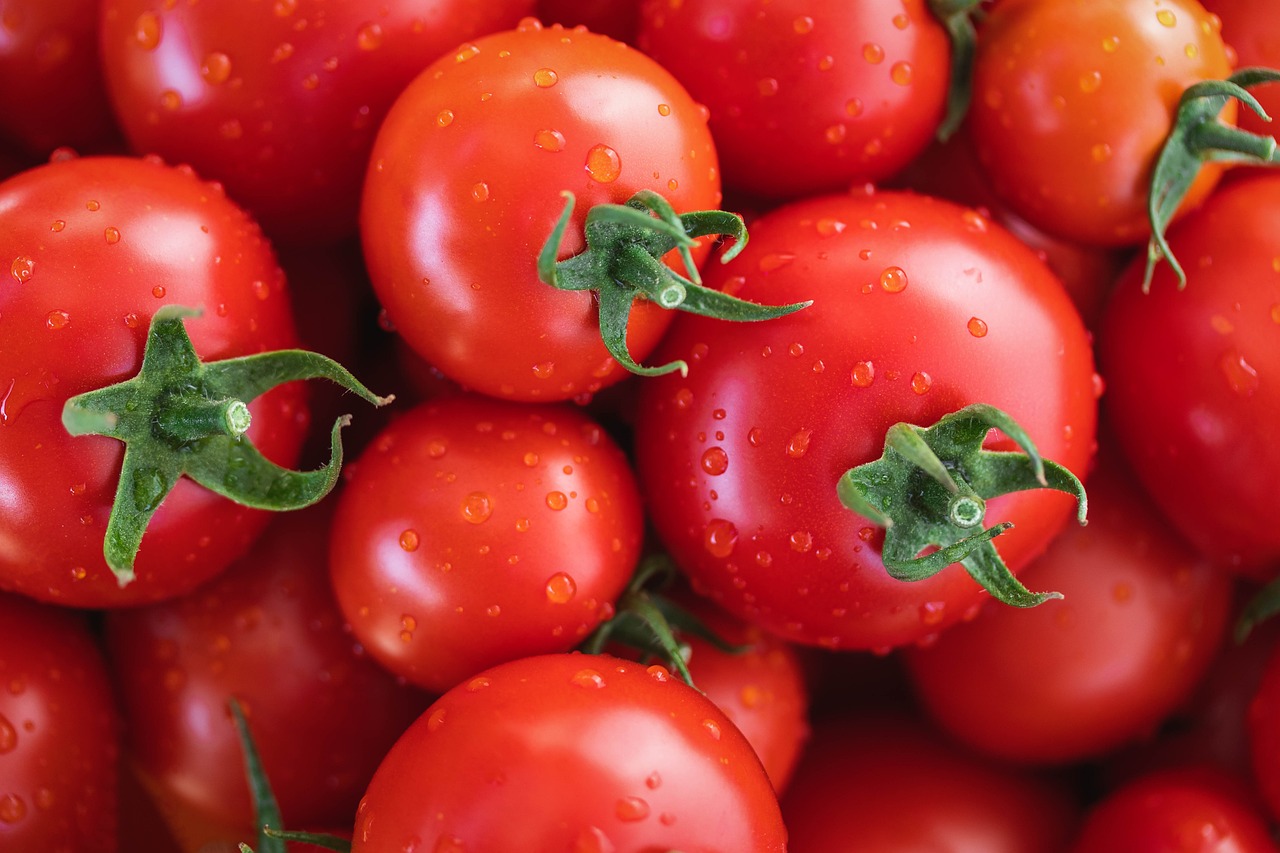
Color mixing can sometimes feel like navigating a maze, especially when you're trying to achieve that perfect hue. It's common for artists to encounter challenges along the way, but fear not! With a bit of understanding and some handy tips, you can troubleshoot your color mixing issues like a pro. First, let's talk about some of the most frequent problems that arise during the mixing process and how to tackle them.
One of the most typical issues is ending up with a muddy color. This often happens when too many colors are mixed together or when complementary colors are combined in excess. To avoid this, remember to keep your palette clean and mix only what you need. A good rule of thumb is to start with a small amount of your base color and gradually add others, testing the mixture as you go. This way, you can maintain control over the vibrancy of your colors.
Another common issue is inconsistency in shades. You might find that the color you mixed yesterday looks different today. This can be due to various factors, including the paint's drying time, the medium you’re using, or even the lighting in your workspace. To combat this, always mix your colors in similar lighting conditions and document your mixing ratios. Keeping a color mixing journal can be incredibly beneficial. You can jot down the colors used, the proportions, and any notes on how the colors appear once dried. This can serve as a valuable reference for future projects.
Sometimes, you might struggle with achieving a specific shade. This can be frustrating, especially when you have a vision in mind. To troubleshoot this, consider using a color wheel as your guide. If you're aiming for a specific hue, identify its position on the wheel and look for the primary or secondary colors that can help you reach that target. For example, if you're trying to create a vibrant green, you'll need to mix blue and yellow in the right proportions. Don't forget that adding a touch of white can lighten your mixture, while a bit of black can darken it, but use these sparingly to avoid losing vibrancy.
Lastly, if you find your colors are drying too quickly, which can hinder your mixing process, consider using a palette with a wet palette feature or adding a medium to your paint. This allows for more extended working time and can help you achieve smoother blends. Remember, patience is key in color mixing. Sometimes, stepping away and returning with fresh eyes can make all the difference.
In conclusion, troubleshooting color mixing can be a journey filled with trial and error. However, by understanding the common pitfalls and keeping a few strategies in mind, you can refine your skills and create stunning artworks with confidence. Embrace the process, and don't hesitate to experiment—after all, some of the best discoveries in art come from happy accidents!
- What should I do if my colors look different when dry?
Always test your colors on a small canvas or paper before committing to a larger piece. Document your mixing process to replicate successful results. - How can I prevent my colors from becoming muddy?
Limit the number of colors you mix at once and keep your palette clean. Start with a base color and gradually add others. - What is the best way to achieve a specific shade?
Use a color wheel to identify the primary colors needed for your desired hue and mix them in small amounts until you achieve the right shade.
Frequently Asked Questions
- What is the color wheel and why is it important for painters?
The color wheel is a visual representation of colors arranged according to their chromatic relationship. For painters, it’s crucial because it helps in understanding how colors interact, mix, and complement each other. By mastering the color wheel, artists can create more vibrant and harmonious artworks.
- What are primary, secondary, and tertiary colors?
Primary colors are the foundation of the color wheel: red, blue, and yellow. Secondary colors, like green, orange, and purple, are created by mixing two primary colors. Tertiary colors result from mixing a primary color with a secondary color, leading to hues like red-orange or blue-green. Understanding these categories helps painters mix colors effectively.
- How do I create color harmony in my artwork?
Color harmony can be achieved by using color schemes such as complementary, analogous, or triadic. Complementary colors, which are opposite each other on the color wheel, create contrast. Analogous colors, next to each other, provide unity. Triadic schemes involve three evenly spaced colors, offering a balanced yet vibrant palette. Experimenting with these schemes can significantly enhance your paintings.
- What are some common mistakes when using complementary colors?
One of the most common mistakes is using complementary colors without balance, which can lead to a chaotic or muddy look. Over-saturating one color can also overwhelm the composition. To avoid this, try to use complementary colors in varying proportions and consider their intensity to maintain visual harmony.
- How can I effectively mix colors?
Start by understanding the basics of primary and secondary color mixing. Use a palette to experiment with different combinations, and always test your mixes on a scrap piece of paper first. Remember, a little goes a long way, so add colors gradually until you achieve the desired hue or shade.
- What should I do if my color mixes aren't turning out as expected?
If you're facing issues with color mixing, first identify the colors you're using and their properties. Sometimes, the problem lies in the quality of the paint or the medium. Also, consider revisiting the color wheel to ensure you're mixing the right combinations. Practice is key; don’t hesitate to experiment until you find what works best for you!



















